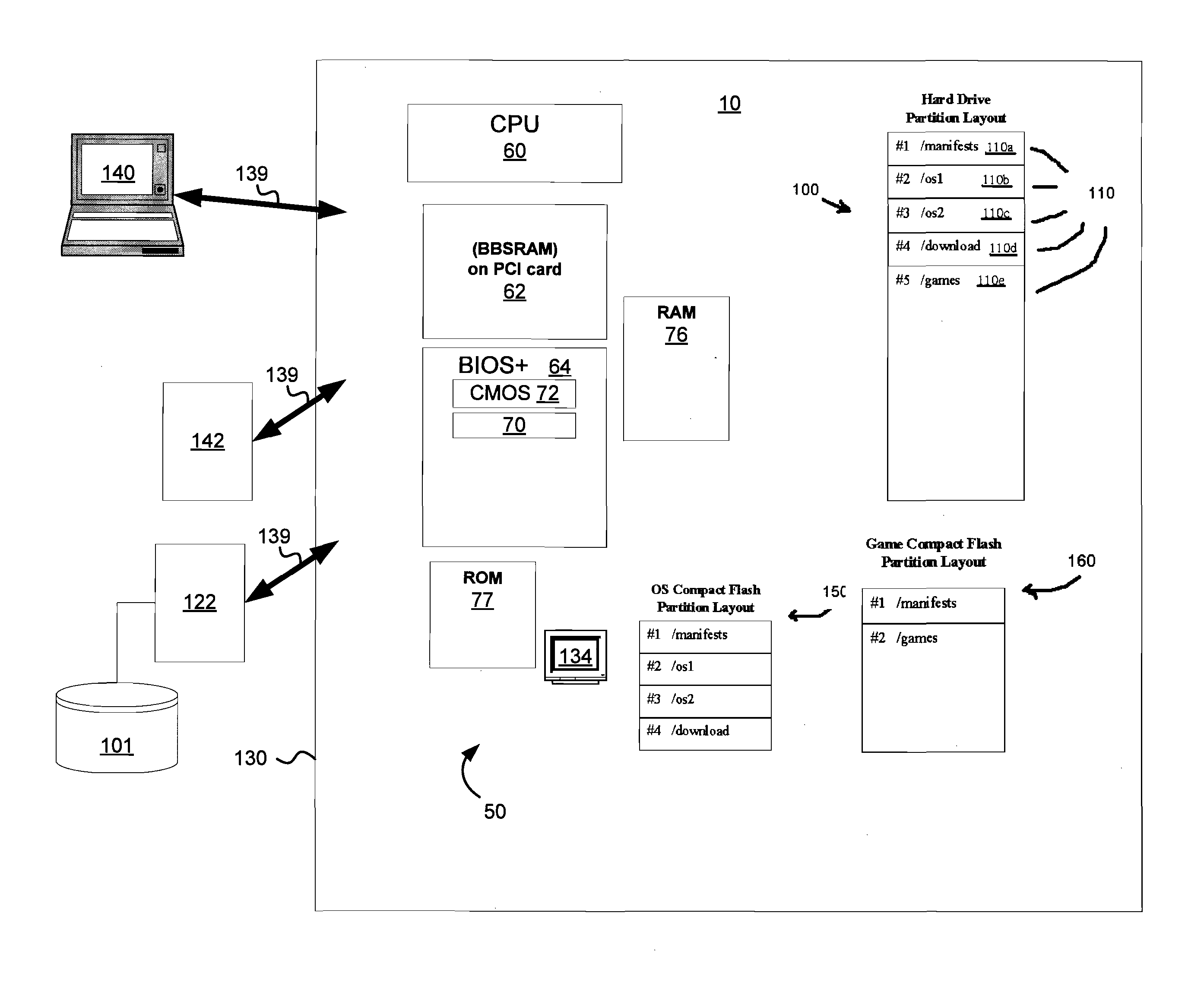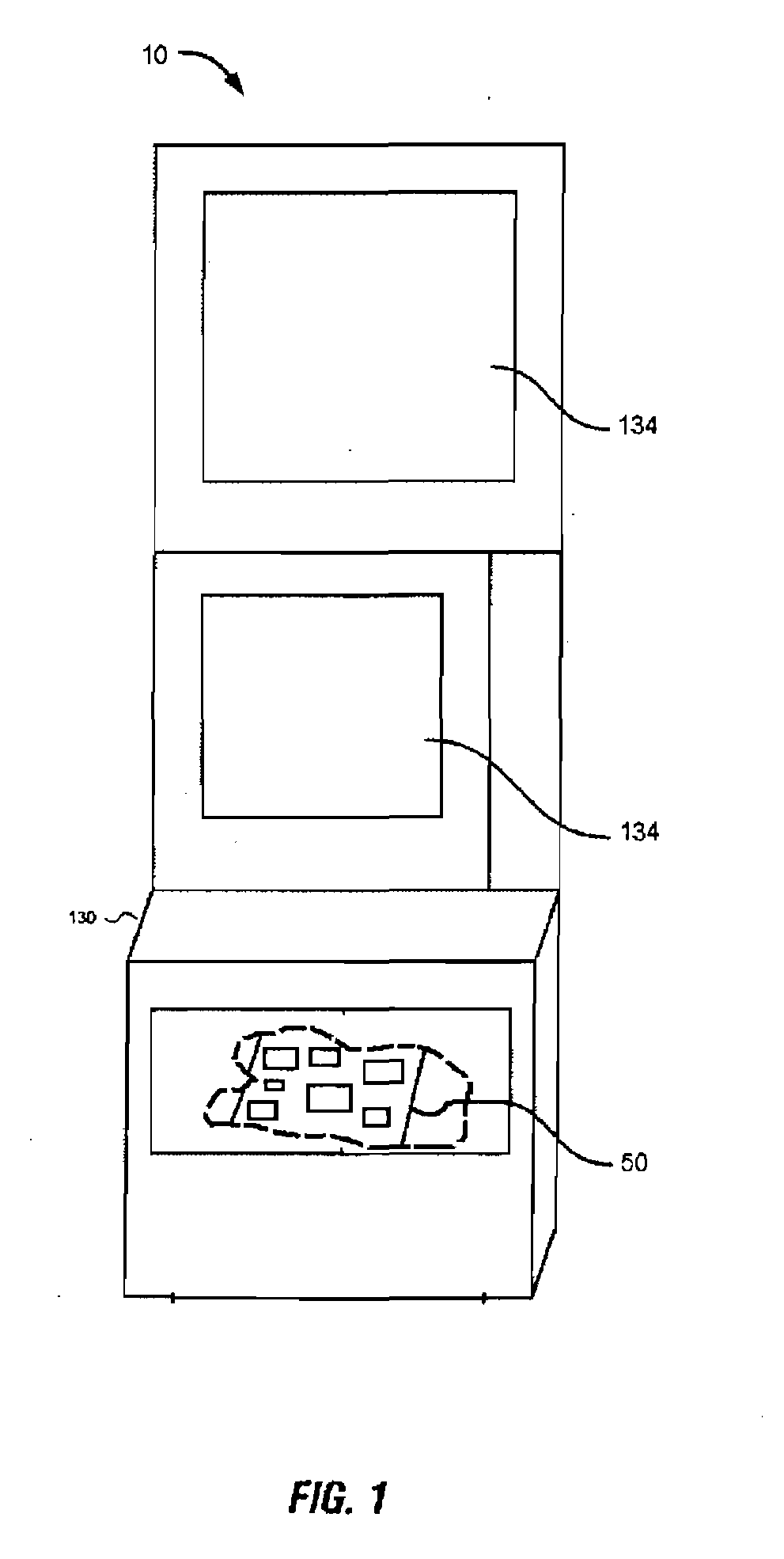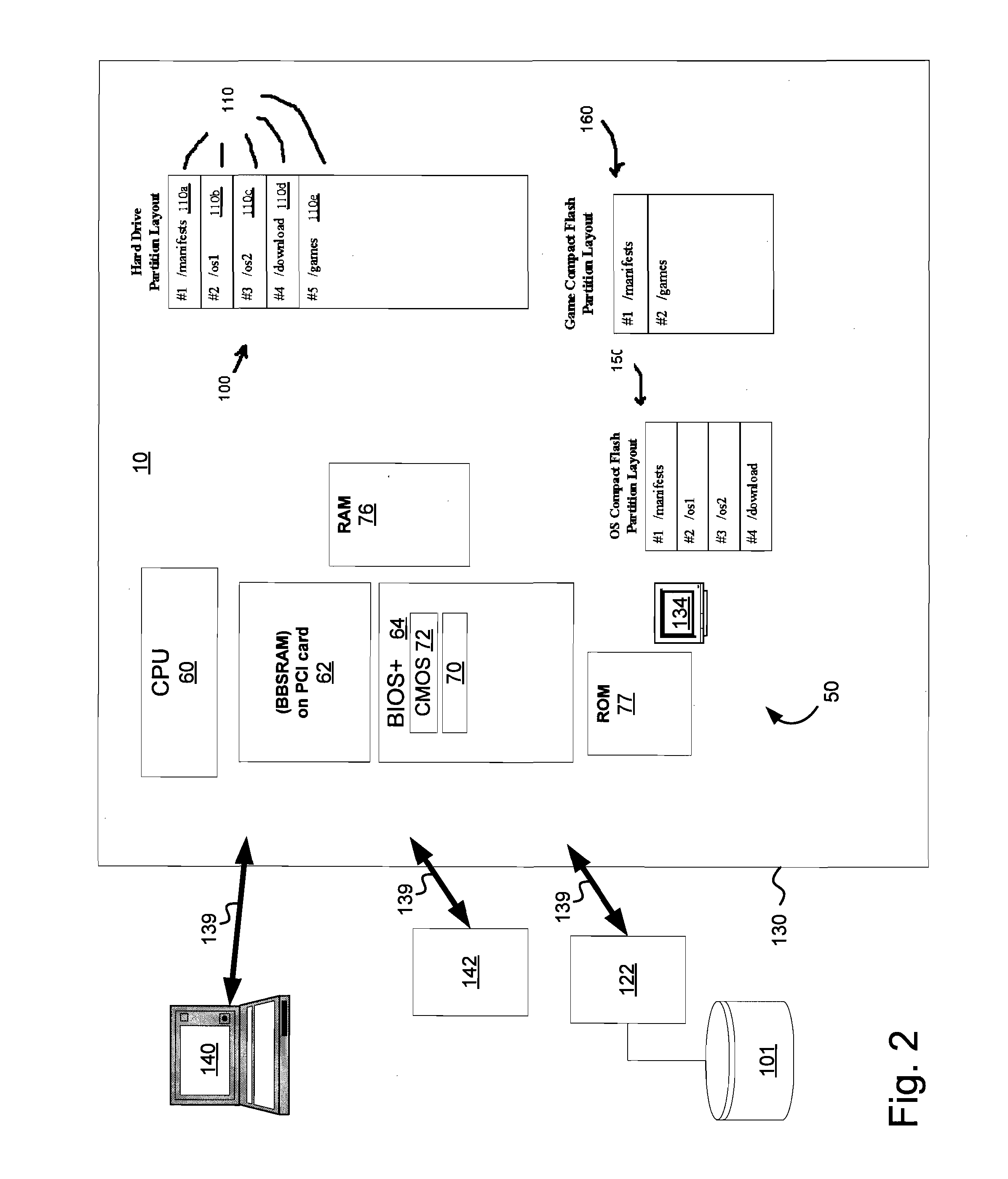[0011]According to one preferred embodiment, a means of quickly authenticating the contents of one or more manifests located on a writeable media device is disclosed. Once the contents of one or more manifests are authenticated, the boot process of the operating system is begun. The operating system then calculates a hash value over each component on the writeable media, as it is needed, and then compares it to a corresponding hash value located within the manifest to insure that the component has not changed. One benefit of this embodiment is that the digital signatures that are used for authentication are only calculated for the data located within the manifests, which are relatively small in size when compared to the entire data set of the writable media. Another benefit is that, for verification, a hash is performed on the components and compared to an associated manifest value, whereby the calculation of the hash is computationally less intensive than performing a digital signature check, as is performed on the manifest.
[0012]According to another preferred embodiment, the components are verified on an as-needed basis, allowing for quicker boot times because only the components that are loaded are verified. This results in quicker system loading times, and through definition of the manifest components, better control over what components are verified and when such components are verified.
[0014]In another preferred embodiment, components are broken down into files, where the manifest contains an entry for each file in the partition. During boot time, the BIOS verified the Linux kernel boot image, and loads it. The Linux kernel verifies each file as it is opened. The added benefit is that an entire partition does not need to be verified when it is mounted. Instead, the files in the partition are verified as they are opened. If the operating system only needs to load 20% of the files during boot time, then the remaining 80% of the files can be verified on an “as-needed” basis when they are loaded at a later time. This dramatically decreases the boot time for the gaming machine Likewise, games are able to load just a portion of their graphic files during boot time. The remaining graphic files used for animated bonus screens, movies, and sounds can be loaded later as those resources are required throughout the game play cycle. In this regard, if a game contains 512 MB of graphics (by way of example only), 80% of which are sounds and movies, then the load time for the game is dramatically improved by delaying the loading of large files to support those sounds and movies.
[0015]Still, further methods of separation of the components to be verified are possible. For example, and not by way of limitation, games that play a 100 MB movie typically open the file and stream the content of the file to the display as the movie is being played. Therefore, it is not desirable to verify the entire file when it is opened, as there would be a significant delay when the movie file is opened for streaming. Therefore, another preferred embodiment allows files to be broken down into blocks of data where each block is verified as it is read from the media. For example, the manifest file may contain a file entry for a 100 MB file, where the file is broken down (by way of example, and not by way of limitation) into 4K block sizes where each block includes a corresponding hash value within the manifest file entry. As each block of the file is read, only that particular block needs to be verified before loading. This allows games to stream large sound and graphic files directly from the hard drive while simultaneously verifying the contents. The benefit is file verification without delays perceived by the player.
[0016]In another preferred embodiment, the breakdown of components is by sectors on the hard disk device. In this embodiment, each sector on the hard drive has a corresponding entry within the manifest. Since sectors are organized around the geometry of the hard drive, and not the file system, this embodiment results in a more efficient and simpler method of verifying information as it is loaded. For example, the Linux operating system has a block driver for a hard drive. When a block driver is instructed to load blocks of data for use by the file system, the block driver can read the sectors of the disk for the blocks of data and verify each sector as it is loaded. The benefit to this process is that sectors comprise continuous data on the hard drive organized around cylinders. Sectors are loaded very efficiently by the hard drive and thus can be efficiently verified using this mechanism. If an entire image is downloaded from a host server for a partition, each partition contains the files in a predefined organization. In one embodiment, a manifest for sectors is pre-calculated for the partition and downloaded along with the partition image.
[0017]In another preferred embodiment, when files are downloaded and installed by the gaming machine, the manifest is calculated dynamically by the gaming machine and stored in a writable area. Once the manifest is created based on any of the component breakdown methods described above, they are digitally signed by the gaming machine itself, or by a remote server. This allows for greater flexibility in how the component breakdowns are selected to achieve the greatest verification efficiency. For example, in one embodiment, downloaded files found in a partition allow the gaming machine to dynamically create a manifest based on hard drive sector verification that is digitally signed by the gaming machine, or by a remote host during manifest file creation. This embodiment provides individual file download capabilities, while maintaining the sector-based verification aspect, which may be the most efficient for the hard disk device in some embodiments.
 Login to View More
Login to View More  Login to View More
Login to View More 


